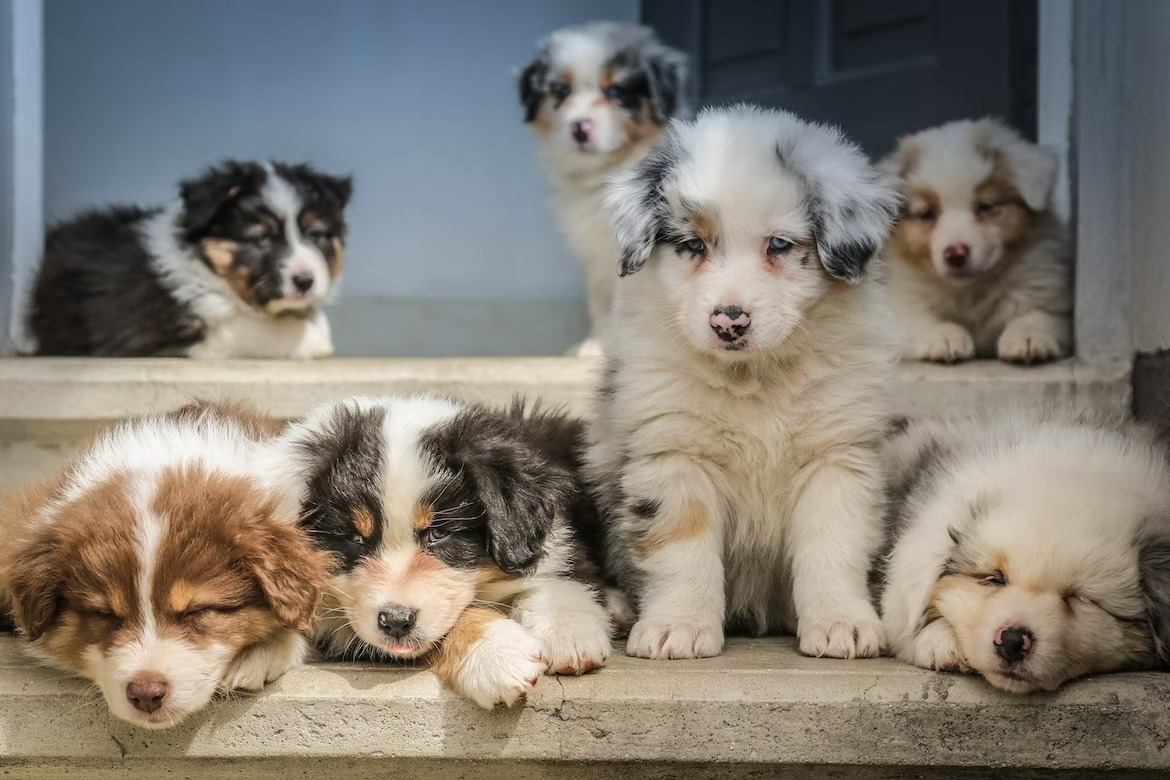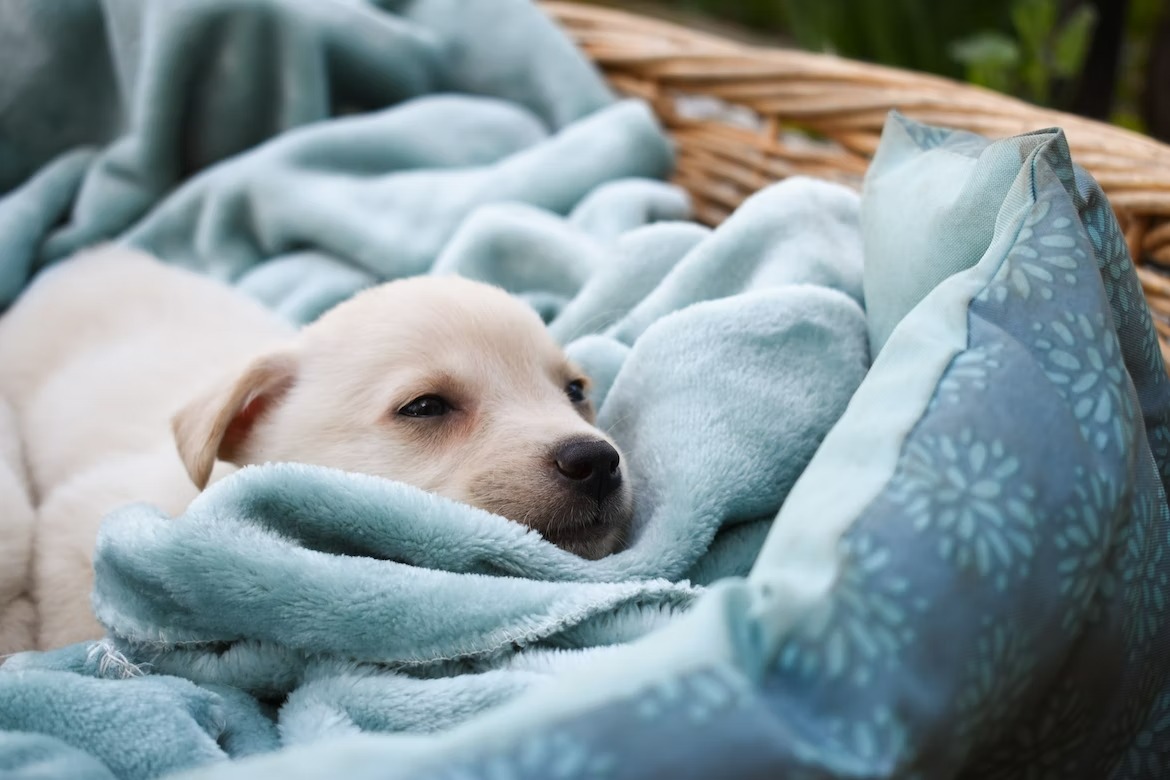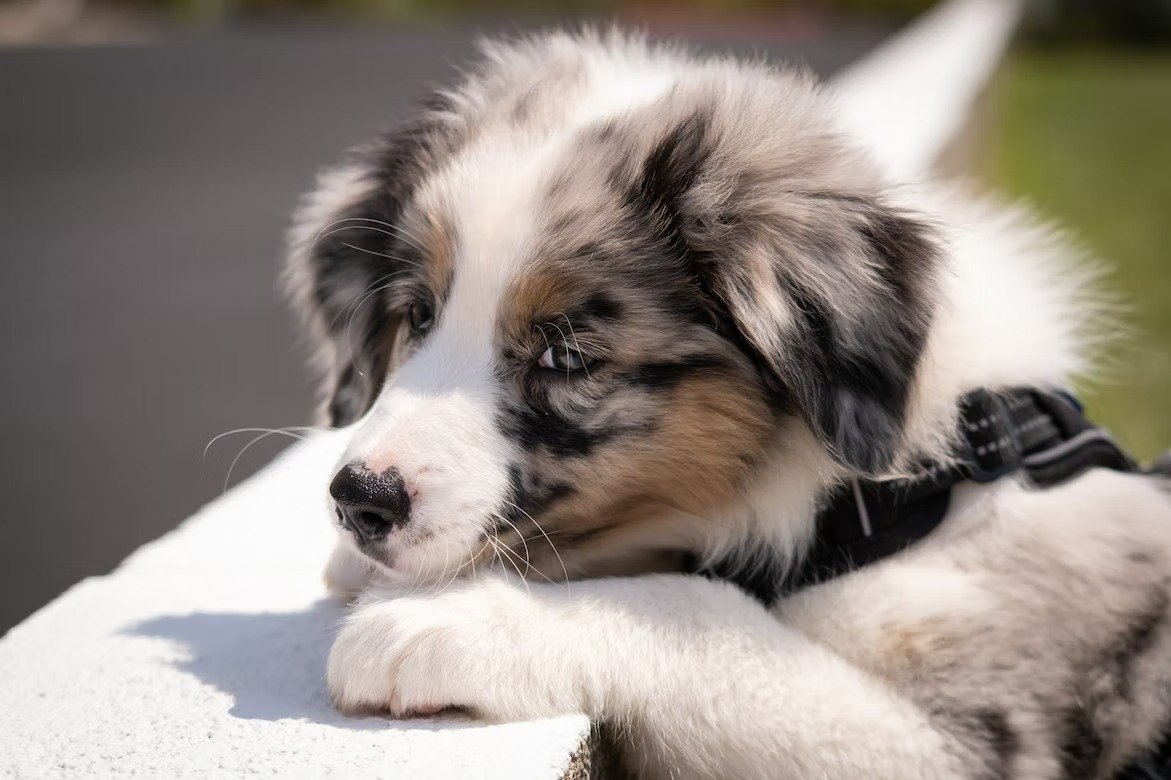
Puppies go through numerous changes between puppyhood and adulthood. Some are more drastic than others. You will find some growing out of their markings or patterns, and some changing their color entirely. But why and how does this happen? And is it normal?
The short answer is YES! Puppies can change their coat color completely and it’s perfectly normal. Here is everything you need to know about how and why puppies change their coat colors and what you can do to determine what color your puppy will be as an adult dog.
Table of Contents
- Puppy Coats and Color Changes
- Puppy Coat Color and Pattern Changes
- Other Factors That Can Make a Puppy Change Color
- Sunlight can lighten your dog’s hair color
- Your puppy’s undercoat is a different shade of color
- Grooming and shaving can change your puppy’s coat colors
- Some health problems can lead to color changes in puppy coats
- Vitiligo is possible in dogs too
- Stress levels can manifest in color changes of the coat
- Age plays a big part in the discoloration of senior dog coat colors
- Nutrition has a say in your puppy’s coat color
- How to Determine What Color Your Puppy Will be As an Adult Dog
- Conclusion
Puppy Coats and Color Changes

All puppies are born with one (gorgeous and adorable) fluffy layer of fur/hair regardless of their double-coated or single-coated breed status. The puppy coat is felted/shed gradually between 4 to 6 months of age. For some breeds, the felting process can take up to a year. The Pomeranian, for example, will get his adult coat at around 2 years of age.
By the time a puppy’s coat is shed and the adult coat grows, some color changes may occur. Most of these puppy coat color changes are barely noticeable, but some can be more dramatic and obvious.
Maltese dogs, who are generally pure white, can appear with cream ears during puppyhood before any coat color changes start to happen. By the time they are 6 to 12 months old, the cream coloring fades away, and they are left with all-white coats.
Poodle puppy coat colors can change quite a bit as well when they reach maturity. Poodle colors are likely to get lighter as the puppies transition into adulthood. For Mini Labradoodle puppies, the opposite happens. There is a possibility that certain areas of their coats will turn into darker shades of their original color.
Puppy Coat Color and Pattern Changes

Surely, you’ve seen 101 Dalmatians. The famous cartoon movie shows how Dalmatian dogs are born with white fur and only develop their spots later as they mature into adults. The same goes for many breeds. Puppies can be born with various patterns, markings, and color shades that will change as they reach adulthood. The best way to know if your puppy will undergo these changes is to look at other adult dogs of the same breed.
Other Factors That Can Make a Puppy Change Color

Puppy coat colors can change for several reasons, most of which are harmless. These changes are due to:
- Sunlight
- Undercoats
- Grooming
- Health
- Vitiligo
- Stress levels
- Age
- Nutrition
Let's get into these reasons and see why and how they happen.
Sunlight can lighten your dog’s hair color
Just like it happens for human hair, sunlight can lighten a dog’s hair considerably. If you’ve noticed your hair getting blonder after a beachside vacation or a summer spent outdoors, you can bet the same thing happens when a dog bathes in sunlight. Hair is bleached by the sun, and it’s completely normal. Shades of brown may turn to light hazel and even blonde. Black may turn into brown, and red into an orange shade.
If you’ve noticed these lighter shades in your puppy’s or dog’s coat color, it is likely due to the sun. The opposite happens during the colder seasons. Your dog’s hair may become darker during autumn and winter, and this is perfectly normal.
Your puppy’s undercoat is a different shade of color
It may be a surprise to hear this, but puppies and dogs don’t have the same shade of color for both undercoats and outer coats. Breeds with double coats typically change colors during shedding seasons and this is because, for a little while, their undercoat becomes more visible. The changes aren’t dramatic, and, in some breeds, they are barely noticeable, if at all.
Grooming and shaving can change your puppy’s coat colors
This may also come as a surprise, but the more you shave your dog, the more its coat texture and color may change. This doesn’t happen for all dogs, but it is a strong possibility. After a dog is shaved, its hair can become lighter in color and softer in texture. It can also change from straight to slightly wavy or even curly as it grows. Your dog’s groomer may tell you this before shaving your dog. Be sure to ask your dog’s groomers about the possible coat changes if they don’t tell you first.
Some health problems can lead to color changes in puppy coats
Pigment changes can be caused by underlying health problems, but these are rare and sometimes difficult to identify. Conditions such as cancer, infections, hypothyroidism, and Rocky Mountain Spotted Fever (caused by tick bites) can cause changes in your dog’s or puppy’s coat color. If you suspect any of these, it is best to visit your dog’s veterinarian for a checkup.
Vitiligo is possible in dogs too
Vitiligo, although rare, can cause color changes in puppy and dog coats. The discoloration typically happens around the eyes, lips, and nose. Although not always permanent, the changes are quite obvious. Melanocytes are the cells that aid color pigmentation in dogs, and when these cells don’t work properly, discoloration occurs.
Vitiligo can be caused by a number of factors, some of which can’t be pinpointed. These include autoimmune problems, genetics, infections, or the presence of a virus.
Stress levels can manifest in color changes of the coat
Stress is another factor that can manifest itself in color changes in a dog’s coat. This typically manifests as excessive shedding or thinning of the hair. When the coat begins shedding more intensely, the undercoat becomes exposed. And seeing as how the undercoat is usually a different color than the topcoat, it can be seen as an obvious change in color.
Age plays a big part in the discoloration of senior dog coat colors
Just like you see signs of aging in a person’s hair color, you can notice it in a dog’s coat color. The discoloration of coat colors in dogs typically occurs around the eyes and muzzle, and it’s more visible in dogs that have a darker coat. Other parts of the dog’s fur can become lighter/grayish as they age, but the most visible parts are around the face.
Nutrition has a say in your puppy’s coat color
Nutrition can also play a big part in your puppy’s color changes. It happens for adult dogs as well. Puppies and dogs need a balanced diet, one that includes minerals, protein, and vitamins. If your dog has any deficiencies due to nutrition, this can manifest itself in coat color changes. The color typically becomes less intense or even appears faded. The hair may also become thinner and begin to shed more noticeably.
How to Determine What Color Your Puppy Will be As an Adult Dog

The easiest way to determine what changes will happen in your puppy’s coat color is to talk to your breeder. If the puppy’s parents have had a litter before, your breeder can tell you what to expect in terms of adult coat color by looking at the dogs from the previous litter.
Nobody wants to buy a white puppy only to have it change color to a dark brown shade. And this does happen, although rarely. A reputable breeder will let you know beforehand if this can occur.
Conclusion
If you’ve recently reserved a puppy and noticed some color changes in their coat, you don’t have to worry, as this is completely normal. The color changes are most likely not going to be dramatic, and your puppy will mature into a gorgeous adult dog. If you do have questions about your puppy’s color changes, you should speak to your breeder to learn more about the possible shades of color your puppy’s coat will develop into.
Scroll down to see FAQs about puppy color changes!
What To Read Next
Hypoallergenic Puppies
20 Best Dogs for Kids
Frequently Asked Questions
What are puppy color changes? Puppy color changes refer to the changes in coat color that occur as a puppy grows and matures. These changes can be subtle or dramatic and can occur gradually or suddenly.
When do puppy color changes typically occur? Puppy color changes can occur at different times depending on the breed, but they generally start to occur around 3-4 months of age and continue until the puppy is around 1-2 years old.
Why do puppy color changes occur? Puppy color changes occur due to a variety of factors, including genetics, age, and exposure to sunlight. As a puppy grows and develops, its body produces different pigments that can change the color of its coat.
Can puppy color changes be predicted? While it is not always possible to predict exactly how a puppy's coat color will change as it grows, certain breeds have more predictable color changes than others. Additionally, observing the color of the puppy's parents and grandparents can give some indication of how the puppy's coat color may change.
Is there anything that can be done to enhance or prevent puppy color changes? There is no guaranteed way to enhance or prevent puppy color changes, as they are largely determined by genetics and natural processes. However, ensuring that a puppy receives proper nutrition and care can help promote healthy coat development and minimize the risk of color changes due to health problems. Additionally, limiting a puppy's exposure to sunlight may help prevent fading or discoloration of its coat.



